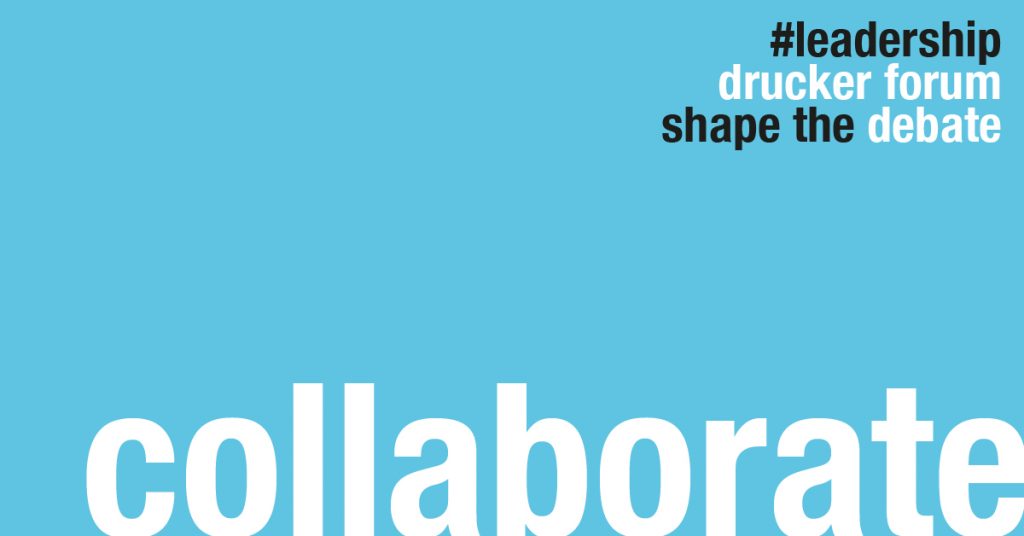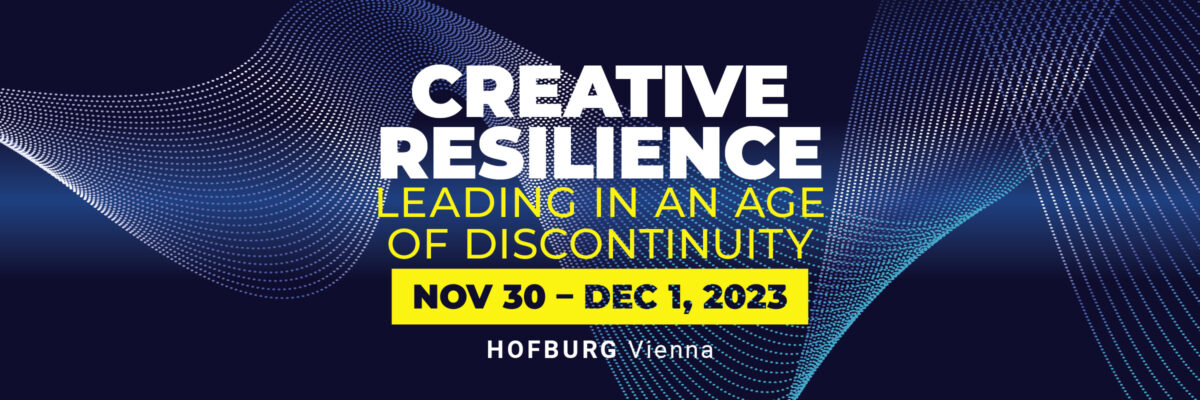
There are some things we’ve learned in the past seven months that make sense to carry forward into the next normal. Chief among them is that the amount of partnering among firms occurring to combat the pandemic, the neighborhood tie-ups to support small businesses, and bubble quarantines in learning groups as well as professional sports teams, requires a collaborative leadership style.
Collaboration is a buzzword that everyone thinks they know what it means, but few truly do. It is typically thought of as a simple skill we all learned in the sandbox, a value to be trumpeted, or technology that allows people to work together electronically. These are all elements of collaboration, but they fail to adequately define it.
Drucker Forum 2020
Collaboration defined
Collaboration is a risk sharing and resource leveraging strategic behavior that necessitates coordinating activities and exchanging information for mutual benefit. It requires trust, transparency, and respect. It is a comprehensive way of thinking and acting that takes proficiency in multiple skills.
Developing the necessary capability—the mindset, skillset, and toolset for intra- and inter-organizational collaboration—is a work in process for most organizations. This is because of both a failure to build the capability and the collaboration paradox—the systems, processes, and policies that helped companies be successful in the past that today impede their ability to collaborate. Until companies evolve the leadership system to encourage and support leaders, true collaboration will not happen.
Leadership systems
Leadership systems usually aren’t talked about much, but they influence how leadership can be exercised in an organization. They are the spoken and unspoken elements of culture that influence decision making, leader selection and development, accountability, the power of informal networks, and resource allocation. The multi-faceted pandemic-related management challenges provide the opportunity to reshape a company’s leadership system to be collaborative.
Collaborative leadership
This is the ability to rally people and their resources, around the strategic purpose of collaborating defined by the value it brings to customers and collaborators. This is the North Star. Collaborative leaders create the environment in which activities can be prioritized and coordinated, and information exchanged in pursuit of that North Star. These leaders accomplish alignment with strategic purpose absent of traditional levers of control and instead they help would-be collaborators understand why it is in their interest to make their resources and relationship currencies available for mutual benefit.
The leadership system has to support the variety of different roles that collaborative leaders play:
- Entrepreneurial catalyst— Guide people to learn fast, to make assumptions about how collaborators might achieve a desired outcome; to put those assumptions into practice; learn if it works and if not, why not, and to iterate assumptions and try again
- Discerning orchestrator—Bring customers, partners, and stakeholders together to create and implement solutions that provide desired outcomes and experiences for all concerned, bridging differences and aligning interests to reach the North Star
- Empathetic coach—Use listening and speaking skills to understand motivations, interests, and challenges collaborators have in navigating the environment that works against collaboration, and helping the collaborators solve problems in a manner that produces a fair and efficient distribution of value,
- Enthusiastic evangelist—Advocate for collaborators, helping them attain and leverage resources, evolve culture, build trust, and champion the collaboration with relevant stakeholders
- Diplomatic influencer—Help people see that it is in their best interest to make their resources and relationship currencies available to their collaborators, or to do something differently, so that there is a mutually beneficial outcome
Thus, as organizations carry forward the learnings of 2020, leadership systems must necessarily evolve. Internal governance structures will take into account external partnering commitments that must be considered when allocating resources. Employees will have more rewarding careers when they discover new opportunities to create value with third parties, or learn to turn competitors into cooperators. Boards of directors will require holistic accountability to all stakeholders. The behavioral norms of an organization will mean that inclusiveness, transparency, and openness to new ways of thinking and acting that lead to creating the “bigger pie” of collaborative outcomes is the next normal.
Leadership everywhere
Collaborative work requires everyone to be leaders. What leadership means is different if you are in the executive suite, the front lines, or the middle of the organization. Executives must demonstrate the behavior they expect, foster the right environment, provide the resources required, and effect the necessary leadership system changes. The leaders in the middle of the organization are at the tip of collaborative leadership. They are the coaches of the front lines—the people who engage with customers and partners daily and who make or break any collaboration. It is the leaders in the middle who must play the multi-dimensional role of change agent and orchestrator, all the while building the capability—the mindset, skillset, and toolset—and breaking the collaboration paradox for good.
About the Author:
Jeff Shuman, CSAP, PhD is the principal of The Rhythm of Business, a consulting, training, and advisory firm with core expertise in alliances and collaboration.
© 2020 The Rhythm of Business, Inc.
This article is one in the “shape the debate” series relating to the fully digital 12th Global Peter Drucker Forum, under the theme “Leadership Everywhere” on October 28, 29 & 30, 2020.
#DruckerForum


Thank you so much for Sharing